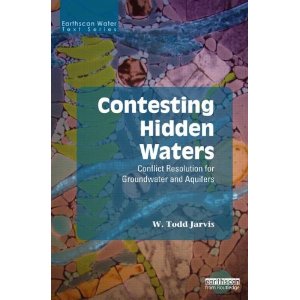Over the weekend I mentioned a new (open access) book on Water, Society, and Technology.
There are a couple of other new resources to be had, both from (or related to) work by the OECD.
The first is the new report “Securing water, sustaining growth” from the Global Water Partnership and the OECD, led by World Bank economist Claudia Sadoff and coauthored with numerous folks at Oxford and the GWP. You can download the full report by visiting this webpage.
A second book, also open access, is on groundwater and agriculture: Dry wells, rising stakes. You can download the book in French or English here. Here’s the short blurb on it: “Groundwater has provided great benefits to agriculture irrigation in semi-arid OECD countries, but its intensive use beyond recharge in certain regions has depleted resources and generated significant negative environmental externalities. The report provides a characterisation of the diversity of groundwater systems, reviews policies in OECD countries, and proposes a package of recommendations to ensure that groundwater can sustain its services to agriculture and contribute to climate change adaptation.”
